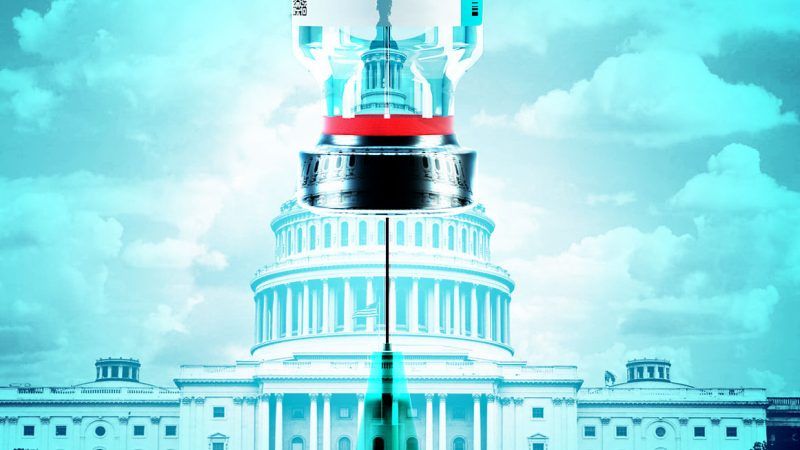The Great Vaccine Fiasco
Federal predictions that 20 million Americans would be vaccinated by the end of 2020 were off by an order of magnitude.

Like so much of the government response to COVID-19, the rollout of vaccines has been beset by poor planning and bad management.
While vaccine distribution is underway, federal predictions that 20 million Americans would be vaccinated by the end of 2020 were off by an order of magnitude; the actual number was a bit more than 2 million. Eleven days into 2021, the Centers for Disease Control and Prevention (CDC) reported that only 9 million or so Americans had received their first doses. "It was a planning error, and I am responsible," U.S. Army General Gustave F. Perna, chief operations officer for the Trump administration's Operation Warp Speed vaccine program, said in December.
Perna was responding to state officials who complained that the federal government was slow to deliver vaccines and that they had nowhere else to turn. By pre-purchasing hundreds of millions of doses, the feds arguably stimulated production, but they also bypassed normal channels. That left them with a virtual monopoly, and they demonstrated all the speed and care characteristic of the U.S. Postal Service and the Veterans Affairs Department.
"Pfizer is not having any production issues with our COVID-19 vaccine, and no shipments containing the vaccine are on hold or delayed," the pharmaceutical company announced on December 17, as criticism mounted. "This week, we successfully shipped all 2.9 million doses that we were asked to ship by the U.S. Government to the locations specified by them. We have millions more doses sitting in our warehouse but, as of now, we have not received any shipment instructions for additional doses."
To be fair, there was plenty of blame to be shared by state and local officials. New York's Democratic governor, Andrew Cuomo, threatened providers with huge fines and loss of their licenses if they bypassed government criteria for prioritizing vaccine recipients. When, inevitably, providers dumped doses rather than face penalties for letting people jump the list, he threatened new consequences. As Reason's Billy Binion noted, "Cuomo presented area hospitals with a double bind: Fail to use all of your vaccines and be fined up to $100,000, or vaccinate people out of order and be fined $1,000,000."
In Florida, state and county online reservation systems crashed and phone lines booted those who sought to make vaccination appointments. "Due to overwhelming demand, we have reached capacity with our COVID-19 vaccination for the community," the Broward County Board of Health announced on December 30. "Scheduling will resume in the coming weeks."
Of course, it wouldn't be a government program if unsavory political considerations didn't enter at some point. "In one of the most shocking moral misjudgments by a public body I have ever seen, the CDC invoked considerations of 'social justice' to recommend providing vaccinations to essential workers before older Americans even though this would, according to its own models, lead to a much greater death toll," wrote Yascha Mounk, a professor of political science at Johns Hopkins University. "The CDC was effectively about to recommend that a greater number of African-Americans die so that the share of African-Americans who receive the vaccine is slightly higher."
That proposal ultimately was rejected, again thanks to political considerations. "Governors are under enormous pressure from their constituents—especially older people, who vote in great numbers and face the highest risk of dying from the virus—to get the doses they receive into arms swiftly," The New York Times noted.
In mid-January, Health and Human Services Secretary Alex Azar announced accelerated vaccine distribution through "more than 40,000 pharmacy locations from 19 chains and associations across the country." It seemed a logical move, given that pharmacies regularly administer vaccines and many have small medical clinics. Perhaps they should have played a larger role from the beginning?
Government red tape still threatens to hobble distribution. At a New York facility attempting to comply with vaccine requirements, USA Today reported, "it took 52 clicks on each person's digital medical record before the patient was ready to receive a shot." A spokeswoman for Virginia's Chesapeake Health Department noted that "the additional burden of the system, process, paperwork, policies, CDC, and budget is overwhelming" for many vaccine providers.
Once again, government planning has proven to be less a cure and more a competing disease.


Show Comments (124)